I took a chance on presenting a new workshop at the Japanese American National Museum this past weekend.
I wanted to build appreciation for Japanese textiles by getting a nice selection of vintage cloth in the hands of the potential participants. I wanted to see if people would be interested and how they would react to the material presented. I was very pleasantly surprised the workshop filled quickly (& with a waitlist) upon being listed.
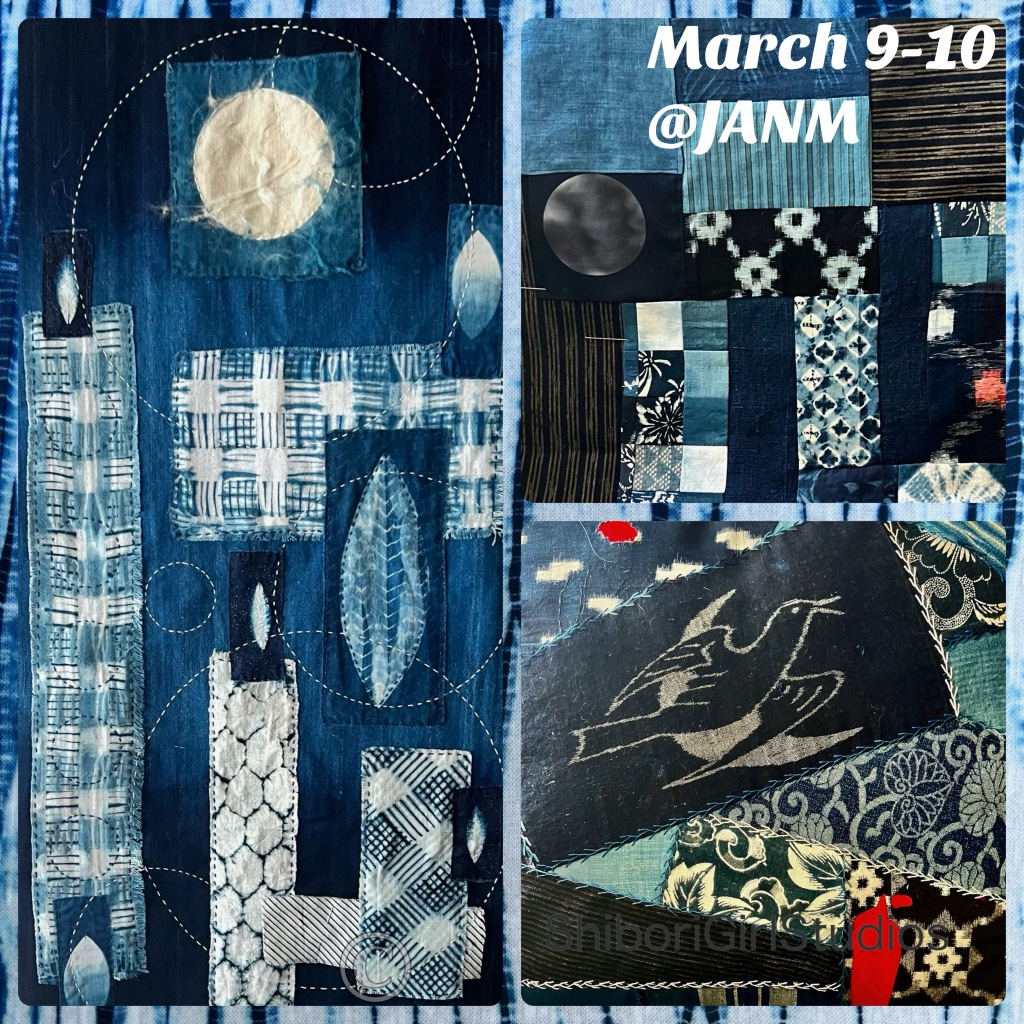
I wanted to go over and above for the participants! I wanted to fill their minds with thoughts and stories of the importance of fabrics and of keeping them alive. I wanted to introduce them to materials and techniques, to broaden their knowledge, while inspiring and feeding their creativity.



I kept all these ideals in MY mind as I spent the entire last week selecting and preparing the fabrics for the material packs. As I ironed, cut and arranged the cloth, I thought of my dialog, the stories I would relate, the images and samples I would share.
In my mind, I put myself in the room, pinning up the samples, deciding where the moon table would be, the book selection, the ironing station, the thread collection, extra scraps…all of it. I was creating an experience.
I imagined them walking into the room, what they might notice first, finding a seat and seeing their handouts and material packs.
I prepared everything and had it all packed and loaded into the car midday Friday. I didn’t want to be rushed in my thoughts or in my time. I wanted a calm focus as I believe that frame of mind would be transferred to the participants.






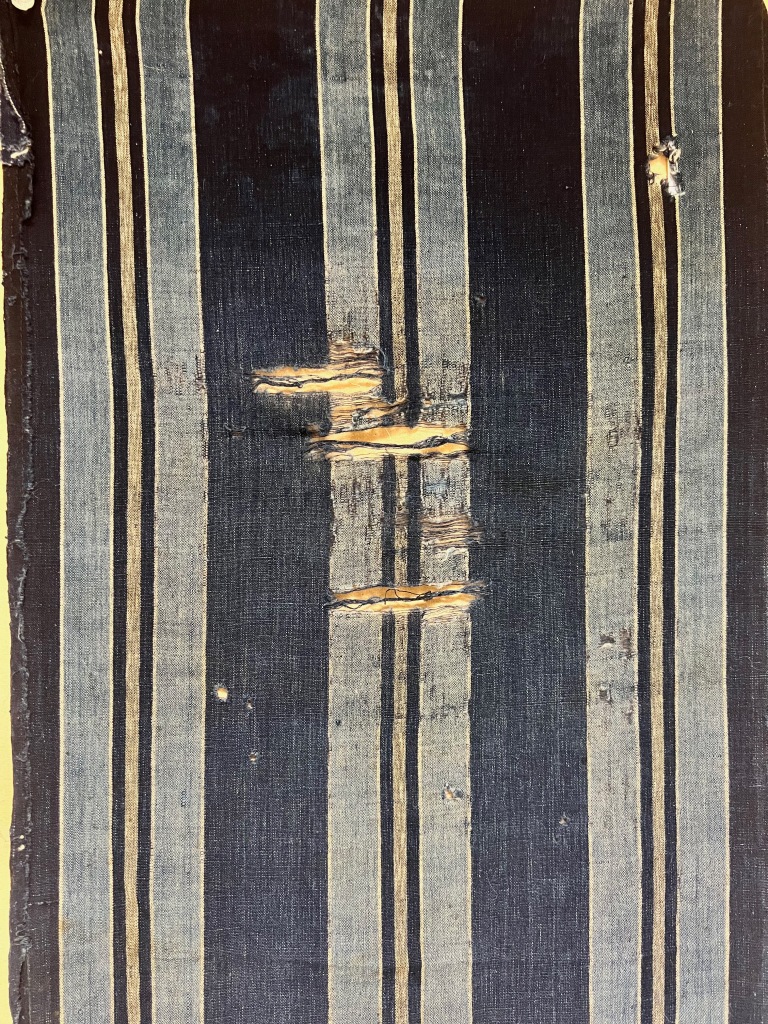
repair opportunity!

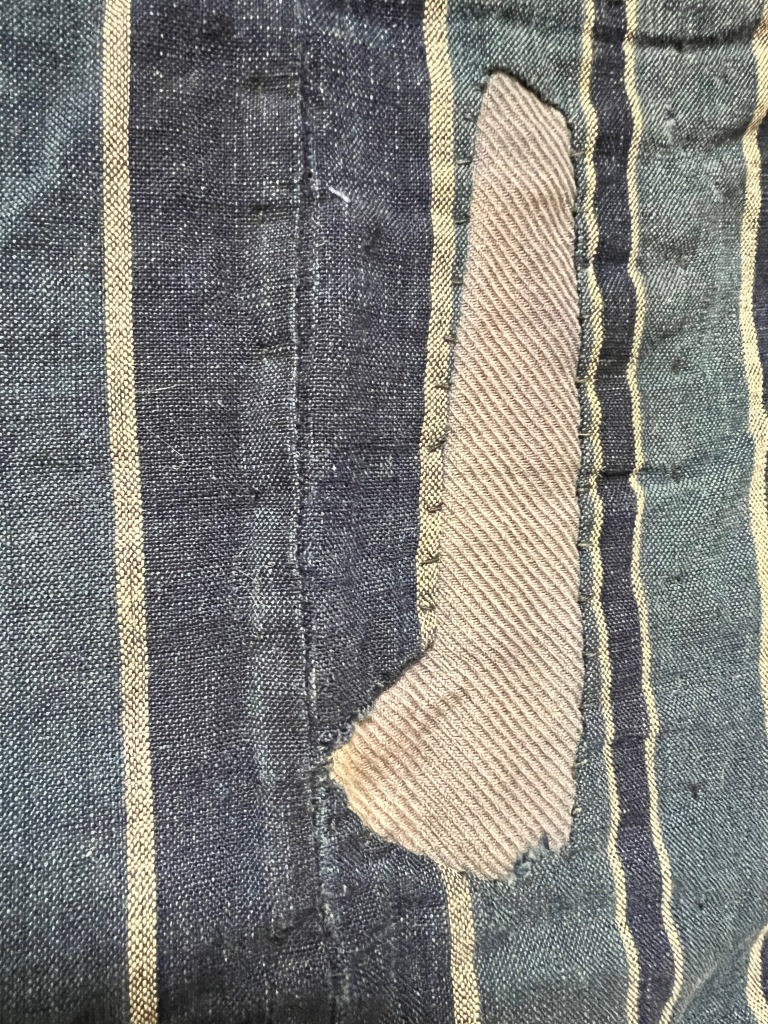


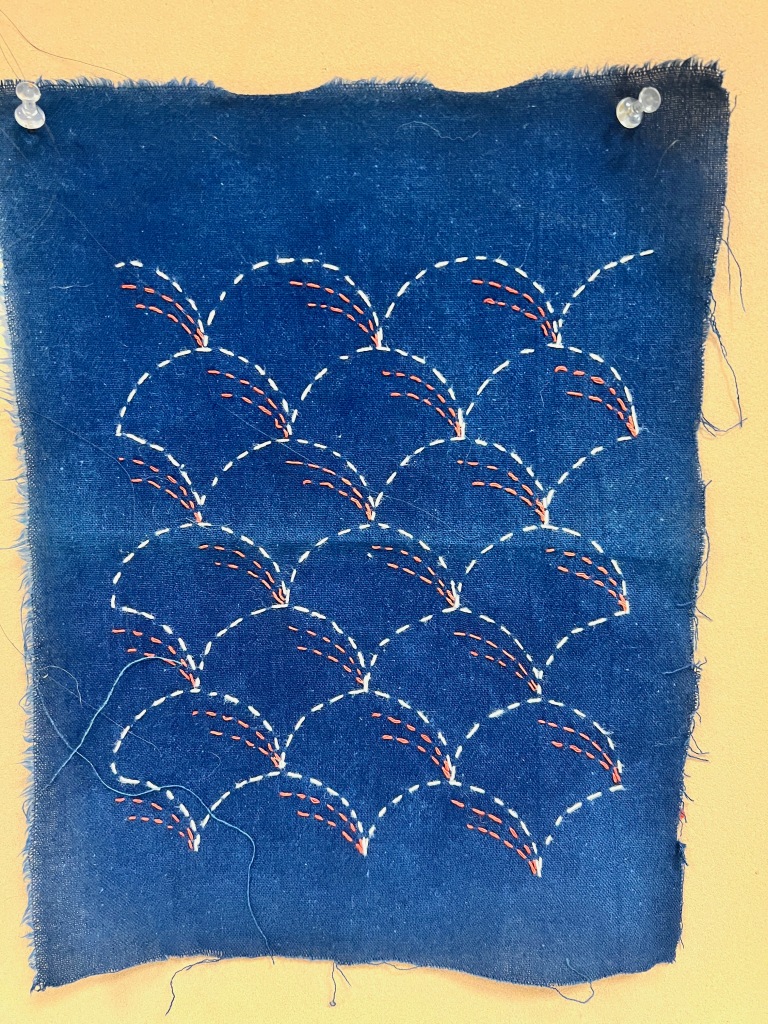


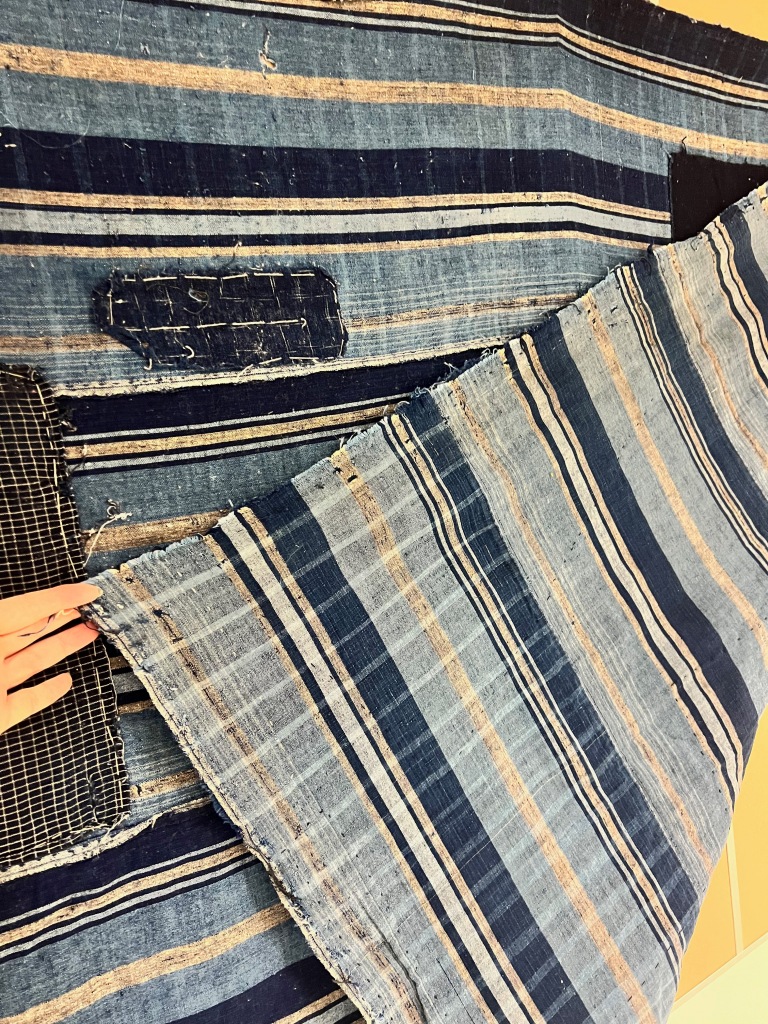
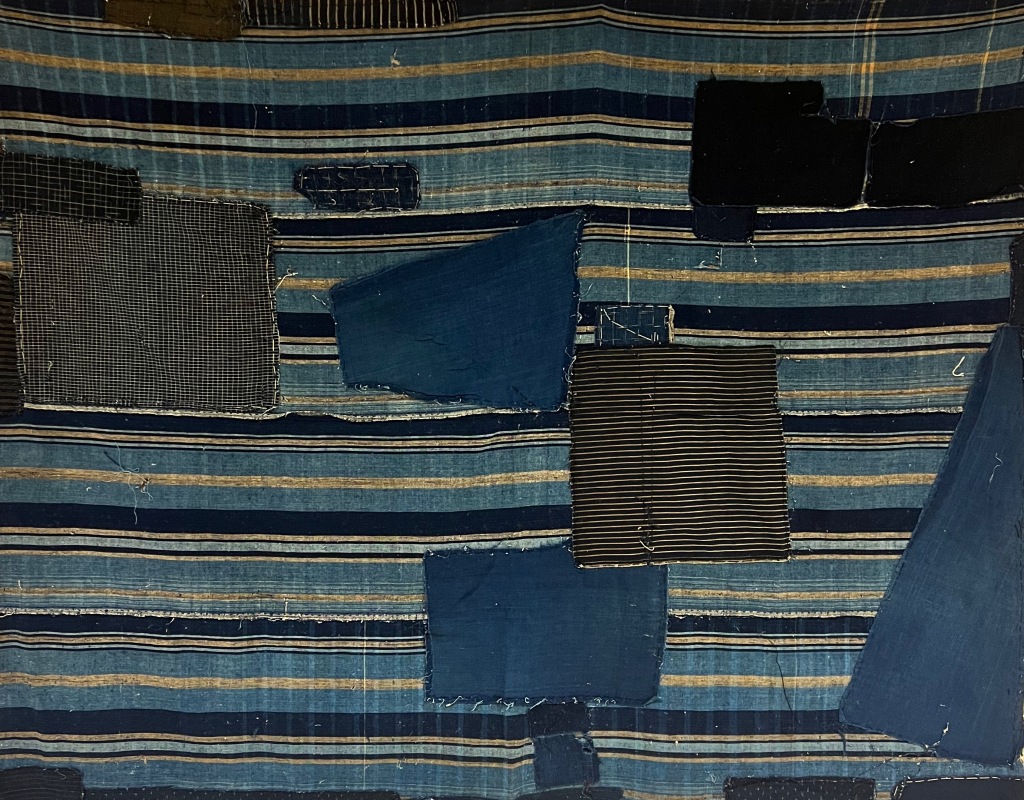
I gave myself plenty of time to arrive early and set up in that same calm mood. I don’t receive the list of participants ahead of time (although a few emailed or messaged me to say they had signed up) so it’s always fun to see who trusts me with a whole weekend of their time. It was great to see several people who had not been to a workshop prior to Covid shut downs. A few others had taken a shibori workshop more recently. It’s always a big thrill to see that about half were completely new faces-often taking their first workshop at the JANM. JANM also has put large air purifiers in each of the event rooms. Thoughtful.
But to everyone, this workshop was a first time event. SO much went on over the two days- I can’t say it all here, but I’ll give a few highlights from my perspective.

I started out by playing a slideshow from photos I had taken from my past visits to the incomparable Amuse Boro Museum in Asakusa, Tokyo, Japan. Sadly, the museum is no longer there but parts of the collection continue to tour worldwide.
Participants were particularly touched by some of the sentiments expressed in the object title cards I had photographedat the museum. Sentiments and stories about the importance of cloth scraps, of passing on textiles, and how much they meant to the keeper and the greater community were shown.
It was a great surprise to learn that there was a mother and daughter in the group and they had brought some old kasuri scraps passed to them by the mother’s mother as well as the grandmother-we decided that four generations were with us there! She expressed that she gained a new appreciation for what these scraps meant to her mother and grandmother and why they had been passed down to her from watching the slideshow.

The material packs consisted mostly of cottons, kasuri, katazome, shibori, stripes, and solids in various indigo shades. They learned how to identify each type of cloth. Most of these pieces were between 50-100 years old. They felt their thickness, their texture, studied the edges, selvedges and the imperfections of each cloth.
The aim was to create a collage like cloth (indigo dyed backing cloth was also provided) and stitch the pieces creatively together forming a whole and practical cloth, giving life to a whole new object. Suggestions and samples provided uses such as a lap quilt, bag, pillow sham, wall piece, garment insert, and more.
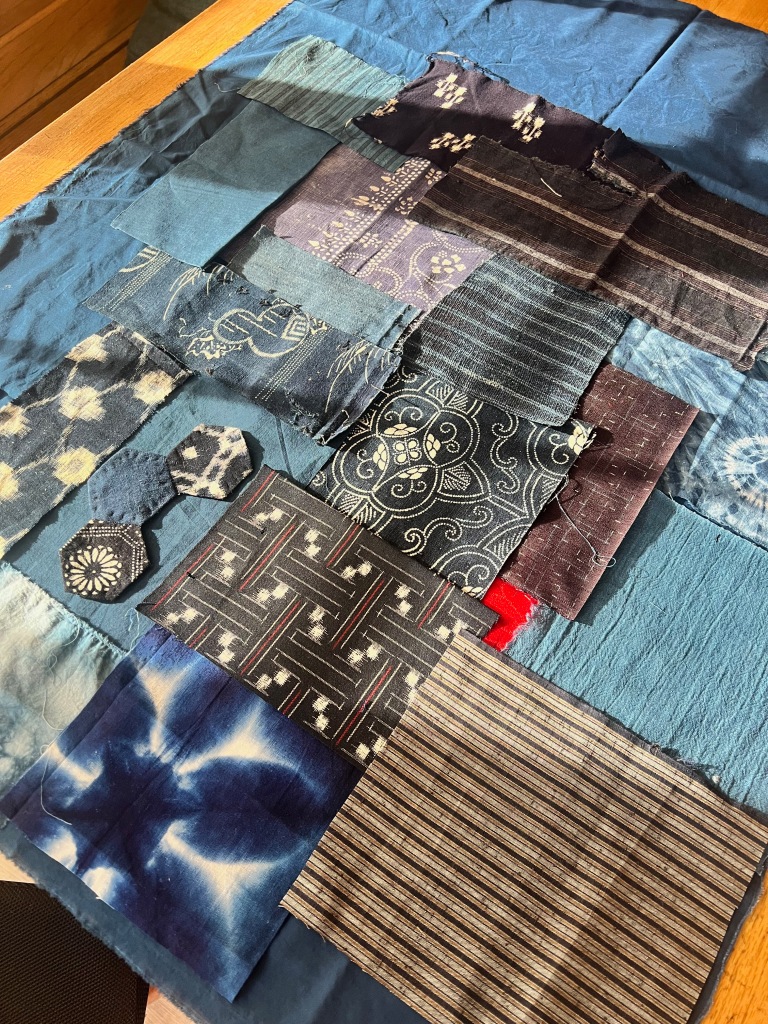
At first, the slideshow hindered them from wanting to take scissors to any of the pieces and many did not, choosing instead to use them as they were received. All passed by the moon table to choose a moon or two, the thread table to choose sashiko threads in a variety of colors and thicknesses, and some made use of the book collection for additional inspiration. Sashiko pattern tracing supplies were available and demonstrated. Individual help was just a few steps away as I circled the room. I had brought a sewing machine in case anyone wanted to use it, but it went untouched the entire weekend. Many had not done any substantial hand sewing, yet all seemed to enjoy it and learned a new appreciation for the “needle in hand” approach. Slowing down, considering, seeing, and feeling were sentiments stitched into each piece. Each was unique. Stories and conversations around the room as they sewed added to the experience.





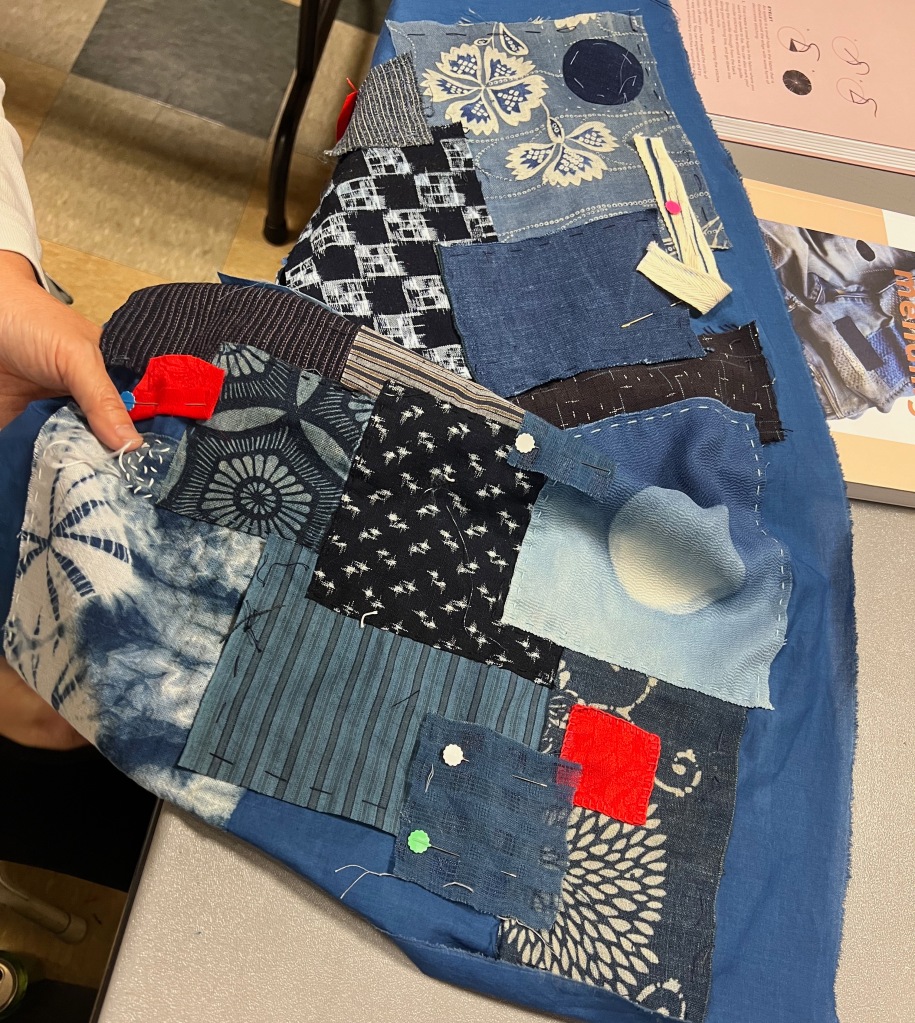




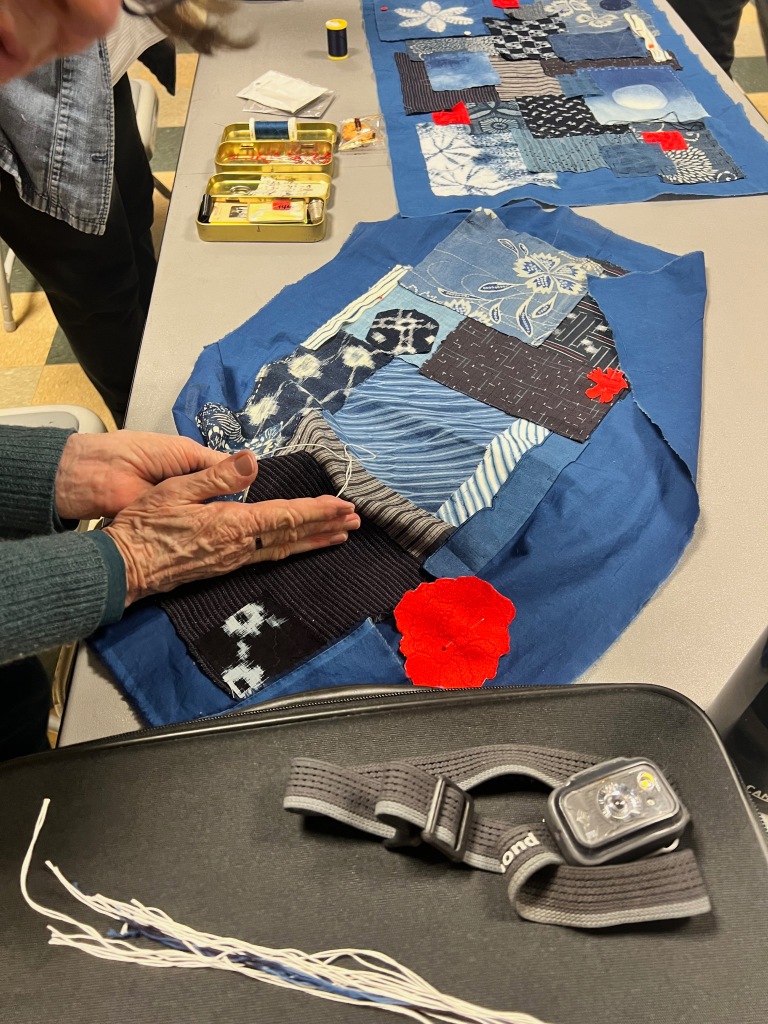






Participants were young and older(20’s thru near 90!). A special shoutout to Margaret who turns 88 (!) this week- so great to see you again and Happy Birthday Blessings to you! Wow! There were friends, couples, family- so great to see. This is the blessing of in-person workshops.
The red silk that was provided in the workshop came from Rumiko Hirata. The last time we were together she gave me her scraps that she had collected. I keep and use them in her memory. As I facilitated this workshop, I worked on this piece as a sample of ideas for the participants. Using her red silk to repair tears in the cloth. I added one strip of red to the fringe. The fringe is made using torn stips of cloth that were saved from various kimono and jackets that were disassembled but were too small to utilize in other ways. Rumiko shared her interest in kintsugi with me and I have taken the idea to cloth by using red silk kimono lining as a repair fabric. I think she would have liked the idea! The hexagons represent kikko a turtle shell-long life and longevity. The stitched kanji is ito, or thread. It connects us all.

Thanks to everyone who came this past weekend, to the Japanese American National Museum, to the makers, dyers, and weavers of the cloth we used and to those who saved it for us,

What a beautiful, rich post Glennis! It looks like a grand time was had by all. I loved reading about your process…the planning, gathering and implementing, which created such a wonderful experience. Your passion shines through ❤️
LikeLiked by 1 person
My heart was full at the conclusion of the workshop ❤️!
LikeLike
thank you for writing in detail about teaching setting up and leading the workshop. Your love of the fabrics shines bright. And how fabric and sewing connects us to our ancestors and each other.
LikeLiked by 1 person
I received several lovely emails from participants yesterday which made me smile😊
LikeLike
It sounds incredible. Just reading your description of everything , form the setting up to the sharing of the workshop experience literally makes my mouth water. So envious of the people who were able to share it with you and thank you for sharing it remotely with us!
LikeLiked by 1 person
I don’t think I’ve ever written about the process of preparing for a workshop like this before but I wanted to remember it even if just for myself.
LikeLike
thank you for reliving your workshop for us here … I especially appreciate the reds at the end as I included scraps of your red moons in my bed cover and love waking up to them each morning
LikeLiked by 1 person
That’s so cool! The reds really pop against the indigo!
LikeLike
Sorry I missed it!!!I would love to participate in this workshop should you present it again! Lynn
LikeLiked by 1 person
I imagine we will do it again.
LikeLike
thank you Glennis for sharing this! Love to see all the beautiful peaces and the work done!
LikeLiked by 1 person
I really hope to see them in their final form one day!
LikeLiked by 1 person
What a wonderful post Glennis. Thank you for sharing your workshop. And what fabulous pieces were made!!
LikeLiked by 1 person
Trying to communicate the experience through a blog post falls a bit short but I had to try. The pieces were wonderful!
LikeLiked by 1 person
Glennis, this is so beautiful and my whole body and soul appreciates all of the photographed items. It is so amazing! I know that my grandfather loved the thread that makes these beautiful Japanese textile. Named my mother after its beauty. You are amazing! I will try to keep a copy of this. I love it! Rita
LikeLiked by 1 person
Ah Rita… I wish I could have met him. Love that you stopped by. We’ve been friends since 5th grade at Saint Maur Yokohama!
LikeLike